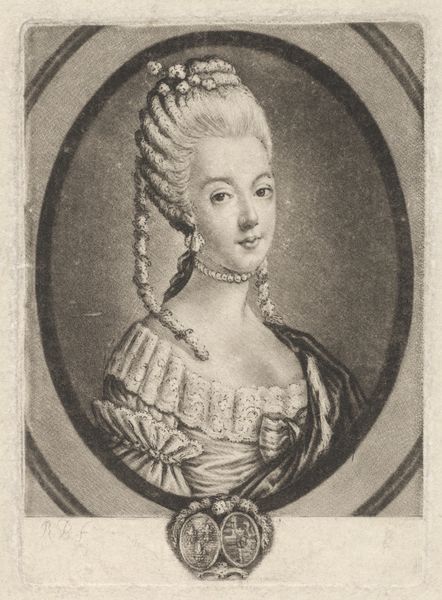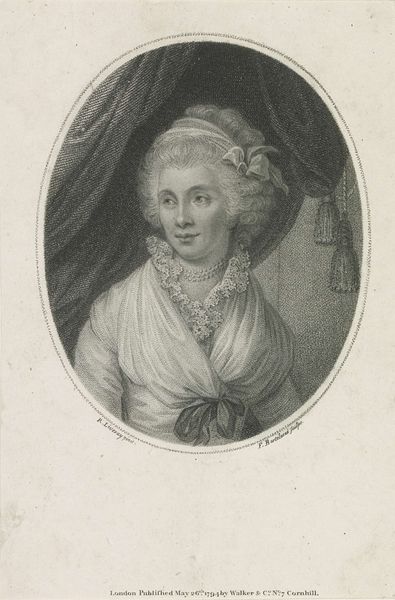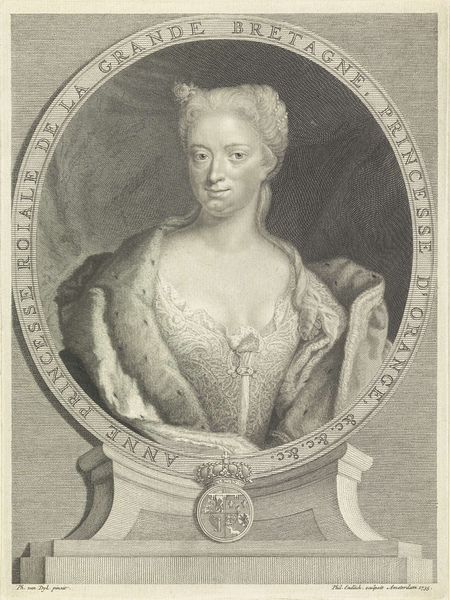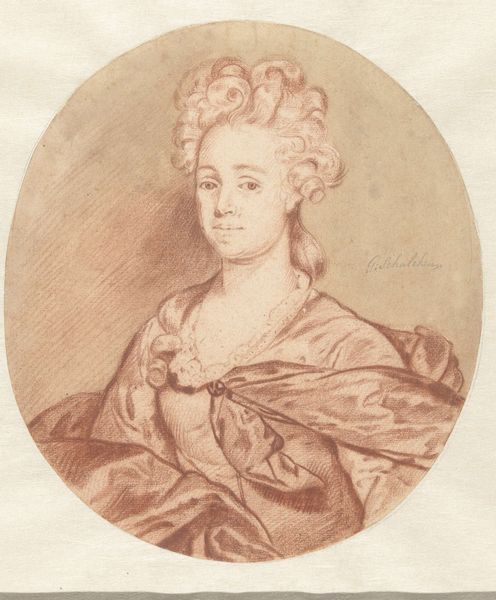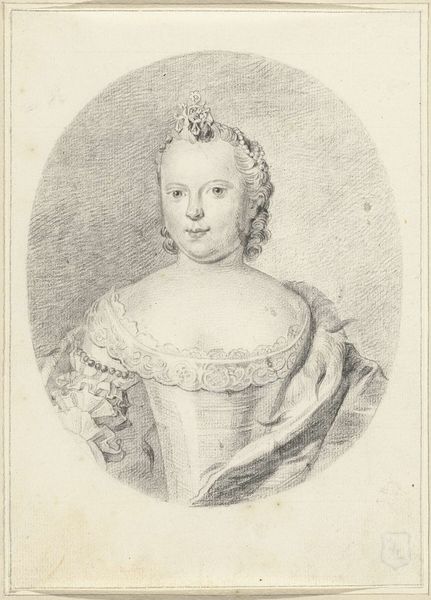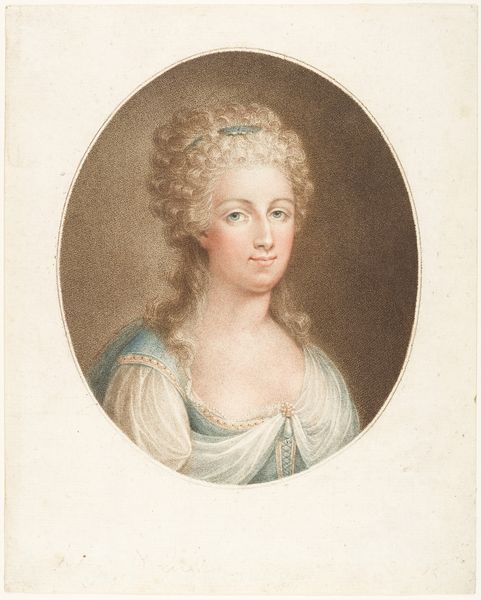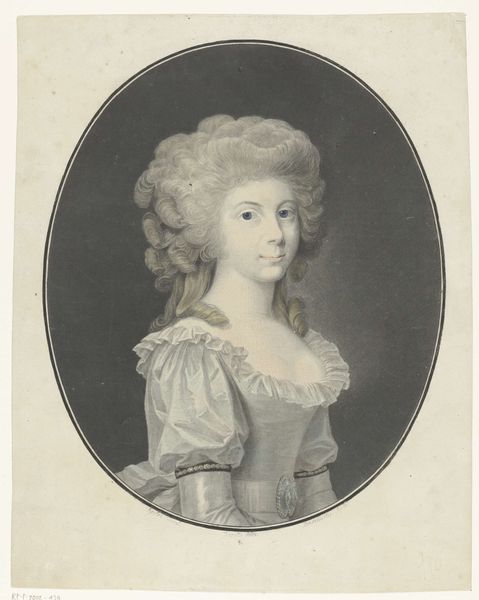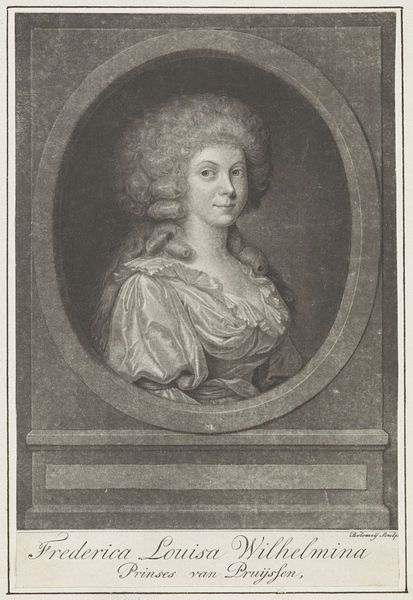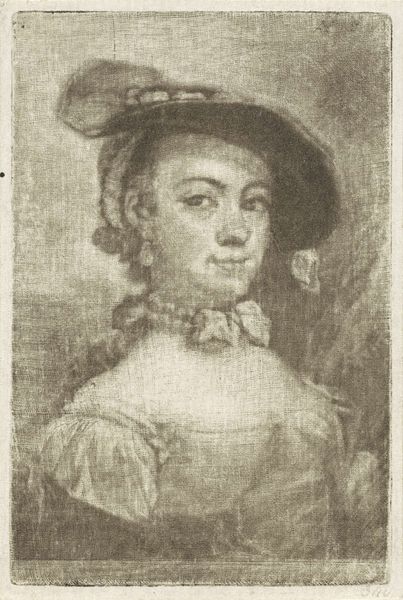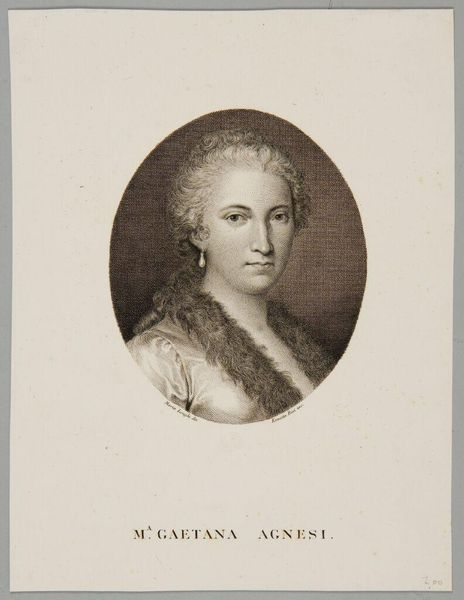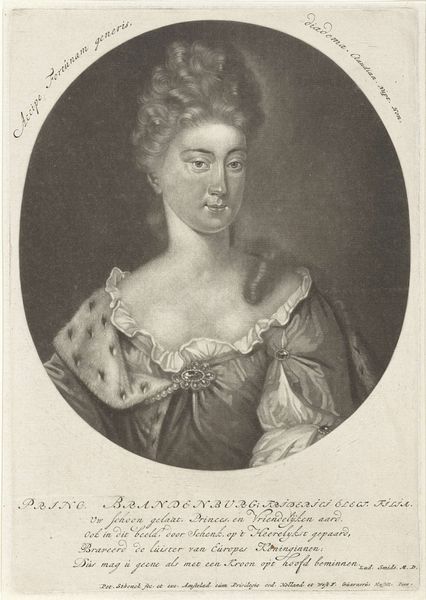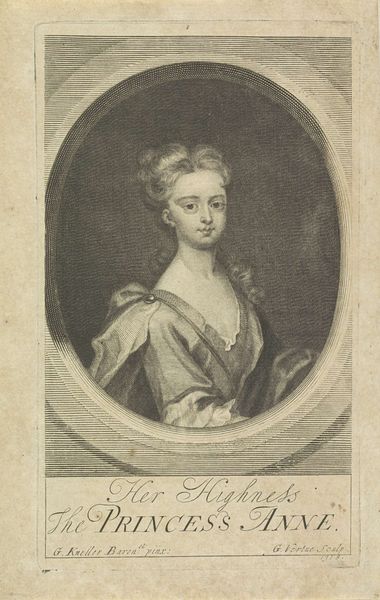
engraving
#
neoclacissism
#
old engraving style
#
history-painting
#
academic-art
#
engraving
Dimensions: height 236 mm, width 158 mm
Copyright: Rijks Museum: Open Domain
Curator: This engraving presents a portrait of Marie Antoinette, Queen of France, created by Lambertus Antonius Claessens sometime between 1792 and 1808, likely after her death. Editor: Oh, she looks so... prim! Is it just me, or does this style sort of flatten her personality? It's almost like seeing her through a very restrictive, gilded cage. Curator: Indeed. Claessens worked in the neoclassical style, which valued order, reason, and idealised forms. We see it reflected here, not just in the aesthetic precision of the engraving itself, but the attempt to compose a particular image of royalty in times of turmoil. Editor: Times of turmoil is an understatement! To render someone in this very controlled and frankly sanitized way, amidst a revolution...it’s so divorced from reality, isn't it? The delicacy of the etching feels almost like a refusal to acknowledge what was actually happening. Curator: Precisely. Think about the medium itself, engraving—with its painstaking lines creating value, modelling form, texture. These minute marks allow the construction of both her physical features and the elaborate costume—the feathers, the gown, the hair—symbols of a world teetering on the edge of collapse. Editor: All that intricacy just highlights how utterly unsustainable her position, and indeed that whole lifestyle, really was. You can sense the tremendous strain, you almost feel for Marie! How did Claessens capture that, so late? Or is it hindsight doing the work? Curator: Perhaps both! This piece gives insight into the artist's intent as much as the Queen's portrayal. We see the tension between a desire to commemorate and an awareness of unavoidable changes, rendering this portrait more than just an image; it's a meditation. Editor: A meditation with some serious mixed feelings, for sure. It makes you wonder what kind of history paintings we’re producing now, and what future generations will say about us! Curator: An excellent thought to end on. The work serves as a reminder to interrogate what, how, and why we memorialize—and even forget—through art.
Comments
No comments
Be the first to comment and join the conversation on the ultimate creative platform.
